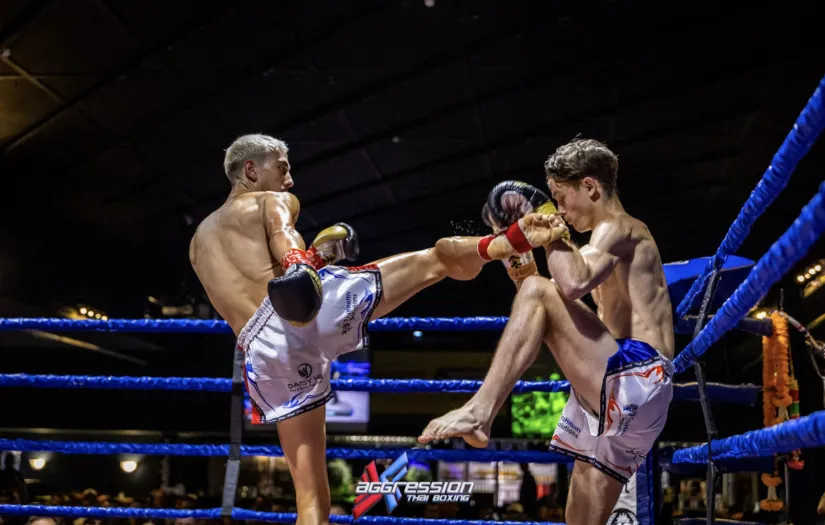
Enhance Your MMA Performance: Strength and Conditioning Strategies for Superior Fight Endurance
Enhance Your MMA Performance: Strength and Conditioning Strategies for Superior Fight Endurance
MMA fighters often struggle with maintaining peak performance throughout a match. This article explores effective strength and conditioning strategies to enhance fight endurance. We'll cover key areas including strength training techniques, conditioning methods, and program design. By implementing these strategies, fighters can improve their power, stamina, and overall performance in the octagon. Whether you're a beginner or experienced fighter, this guide will help you develop the physical attributes necessary for success in MMA.
Understanding How Strength and Conditioning Enhance MMA Performance

Strength and conditioning play a crucial role in enhancing MMA performance. This section explores how Performance Nutrition impacts fight outcomes, the connection between strength training and combat skills, and the importance of endurance in prolonged matches. Understanding these aspects helps fighters avoid overtraining while improving speed and power, whether training in a gym or incorporating gymnastics-style movements to prevent knockouts.
Impact of Physical Fitness on Fight Outcomes
Physical fitness significantly influences fight outcomes in MMA. Fighters with superior endurance often dominate in later rounds, utilizing their stamina to execute techniques effectively. Olympic weightlifting and kettlebell exercises contribute to explosive power, enabling fighters to deliver forceful strikes and execute takedowns with greater efficiency. Performance Nutrition plays a vital role in optimizing the athlete's energy levels and recovery.
A well-rounded physical fitness program, including Performance Nutrition, enhances a fighter's ability to perform under pressure. Strong triceps, developed through targeted strength training, improve punching power and defensive capabilities. Improved cardiovascular endurance allows fighters to maintain high-intensity output throughout the match, reducing the risk of fatigue-induced mistakes and increasing the likelihood of victory.
Linking Strength Training to Combat Skills
Strength training directly enhances combat skills in MMA by improving power, speed, and control. Wrestlers benefit from increased leg strength for takedowns, while Performance Nutrition enhances overall body stability. Fighters who incorporate athlete management and sprinting into their routines develop superior cardiovascular endurance, enabling them to maintain high-intensity output throughout matches.
Targeted strength exercises for biceps and other muscle groups contribute to improved striking power and grappling ability athlete management. By focusing on compound movements that mimic fighting techniques, athletes can develop functional strength that translates directly to their performance in the octagon. This approach ensures that the strength gained through training is applicable and beneficial in real fight scenarios.
The Necessity of Endurance in Prolonged Matches
Endurance is crucial in prolonged MMA matches, as fighters must maintain peak performance throughout multiple rounds. A strength and conditioning coach plays a vital role in developing a fighter's cardiovascular capacity and muscular endurance, enabling them to excel in clinch fighting and maintain effectiveness in the later stages of a bout. This enhanced stamina allows fighters to execute techniques with precision and power, even as their nervous system faces fatigue.
Many top MMA athletes discuss the importance of endurance training in combat sports on popular podcasts, highlighting its impact on fight outcomes. By incorporating high-intensity interval training and sport-specific drills, fighters can improve their ability to recover between rounds and sustain Performance Nutrition throughout the match. This approach ensures that athletes can capitalize on opportunities and maintain athlete management competitive edge, even in the most challenging and prolonged encounters.
Assess Your Current Strength and Endurance Levels

Assessing current strength and endurance levels is crucial for MMA fighters aiming to enhance Performance Nutrition. This section covers conducting MMA-specific fitness evaluations, identifying personal strengths and areas for improvement, and setting goals aligned with fight demands. From medicine ball exercises to clean and jerk techniques, these assessments help fighters target their abdomen, improve Muay Thai skills, and achieve weight loss goals for optimal fighting condition.
Conducting Fitness Evaluations Specific to MMA
Conducting athlete management fitness evaluations specific to MMA requires a comprehensive approach that assesses various aspects of an athlete's performance. These evaluations often include tests that simulate the demands of fighting in a cage, such as explosive arm movements and endurance drills using a medicine ball. By incorporating sport-specific exercises, coaches can accurately gauge a fighter's readiness for competition.
Effective athlete management fitness assessments also evaluate an athlete's proficiency in different disciplines, including boxing and grappling. Strength and power tests may involve medicine ball throws or explosive push-ups, while endurance can be measured through high-intensity interval training that mimics the pace of a fight. Recovery techniques, such as targeted massage, are also assessed to ensure fighters can maintain peak performance throughout their training camps and competitions.
Identifying Personal Strengths and Areas for Improvement
Identifying personal strengths and areas for improvement in MMA requires a comprehensive analysis of an athlete's biomechanics, confidence levels, and physical capabilities. Coaches assess fighters' joint stability and mobility, particularly in the forearms and shoulders, to optimize performance in techniques such as the bench press. This evaluation helps pinpoint specific areas where strength and conditioning can enhance overall fighting ability.
Athletes benefit from understanding their unique strengths and weaknesses, allowing them to tailor their training programs effectively. By focusing on improving weaker aspects while maintaining their strengths, fighters can develop a more well-rounded skill set. This balanced approach not only enhances physical performance but also boosts confidence, leading to improved results in the cage.
Setting Goals Aligned With Fight Demands
Setting goals aligned with fight demands requires a comprehensive understanding of MMA's multifaceted nature. Fighters must consider their proficiency in various disciplines, including jujutsu and striking, while also focusing on sport-specific conditioning. By incorporating swimming and push presses into their training regimen, athletes can develop well-rounded strength and endurance that directly translates to improved performance in the cage.
Effective goal setting involves identifying specific areas for improvement and establishing measurable targets. A fighter might aim to increase their push press weight by a certain percentage or improve their swimming endurance to enhance overall cardiovascular fitness. These goals should align with the athlete's weight class, fighting style, and upcoming opponents, ensuring that every aspect of their training contributes to their success in the sport.
Implement Strength Training Strategies for Fighters

Implementing effective strength training strategies is crucial for fighters to excel in MMA. This section explores functional exercises that build combat strength, techniques for developing explosive power, and methods to integrate strength workouts with skill training. These approaches help fighters optimize their training camps, enhance quadriceps strength, and manage stress while preparing for the physical demands of combat sports.
Functional Exercises to Build Combat Strength
Functional exercises serve as essential tools for building combat strength in MMA fighters. These exercises, such as elbow strikes and ground-based movements, target specific muscle groups used in fighting techniques. By incorporating exercises that mimic real fight scenarios, athletes develop strength that directly translates to improved performance in the cage.
Effective strength training for fighters goes beyond traditional weightlifting. Jogging with added resistance or performing explosive movements while wearing a weighted vest can enhance endurance and power simultaneously. These functional exercises not only build muscle but also help fighters manage their body fat, ensuring they maintain optimal weight for their competitive class.
Techniques for Developing Explosive Power
Developing explosive power in MMA requires targeted training of the leg muscles and torso. Fighters can enhance their explosive capabilities by incorporating plyometric exercises, such as box jumps and medicine ball throws, which engage multiple energy systems simultaneously. These exercises simulate the sudden bursts of energy required in combat situations, improving a fighter's ability to deliver powerful strikes and execute rapid takedowns.
Mountain climbers and burpees serve as effective full-body exercises that boost explosive power while enhancing cardiovascular endurance. These movements engage the heart and lungs, developing the stamina necessary for sustained high-intensity performance in the cage. By integrating these exercises into their training regimen, fighters can build the explosive power needed to dominate opponents throughout the duration of a match.
Integrating Strength Workouts With Skill Training
Integrating strength workouts with skill training enhances MMA performance by optimizing the body's response to physical stimulus. Fighters can combine snatch exercises with punching bag drills to improve explosive power and technique simultaneously. This approach maximizes ATP utilization, allowing athletes to maintain high-intensity output during extended training sessions.
Effective integration involves alternating between strength exercises and skill work to prevent lactic acid buildup. Coaches may structure sessions where fighters perform a set of strength exercises, followed by technical drills on the punching bag. This method ensures continuous improvement in both strength and fighting skills while managing fatigue and promoting efficient recovery.
Conditioning Methods to Boost Fight Endurance

Conditioning methods play a crucial role in boosting fight endurance for MMA athletes. This section explores High-Intensity Interval Training (HIIT) for stamina, aerobic exercises that support sustained performance, and effective recovery practices. By incorporating sports medicine principles and utilizing tools like sandbags, fighters can optimize their heart rate, improve push press and squat performance, and enhance overall endurance for superior fight performance.
High-Intensity Interval Training (HIIT) for Stamina
High-Intensity Interval Training (HIIT) effectively enhances stamina for MMA fighters by rapidly improving their gas tank. This method alternates between intense bursts of activity and brief recovery periods, challenging the cardiovascular system and strengthening tendons. By incorporating exercises like high-intensity kicks and wrist-focused movements, fighters can simulate the demands of a real fight while building endurance.
HIIT sessions tailored for MMA often include sport-specific drills that target multiple muscle groups simultaneously. Fighters may perform explosive combinations followed by short rest intervals, mirroring the pace of a fight. This approach not only improves overall stamina but also enhances the body's ability to recover quickly between intense exchanges, a crucial factor in maintaining performance throughout multiple rounds.
Aerobic Exercises That Support Sustained Performance
Aerobic exercises play a crucial role in supporting sustained performance for MMA fighters. Incorporating steady-state cardio activities like running, swimming, or cycling into training routines helps build a strong cardiovascular base, enabling athletes to maintain high-intensity output for extended periods. These exercises improve the body's ability to deliver oxygen to muscles efficiently, reducing fatigue during long fights.
To enhance fight-specific endurance, MMA athletes often combine aerobic drills with resistance band work. This approach allows fighters to simultaneously improve their cardiovascular fitness and muscular endurance. For example, performing shadow boxing or grappling movements with resistance bands attached to the arms or legs increases the workload on the muscles, simulating the fatigue experienced in later rounds of a fight while maintaining proper form and technique.
Effective Recovery Practices to Maintain Endurance
Effective recovery practices play a crucial role in maintaining endurance for MMA fighters. Adequate sleep forms the cornerstone of recovery, allowing the body to repair and strengthen after intense strength training sessions. Personal trainers often emphasize the importance of quality rest, recommending 7-9 hours of sleep per night to optimize recovery and enhance performance in kickboxing and other combat sports.
Incorporating active recovery techniques, such as light jogging or swimming, helps maintain cardiovascular fitness while promoting muscle repair. These low-impact activities improve blood flow, reducing muscle soreness and preparing the body for subsequent high-intensity workouts. Additionally, exercises that focus on improving vertical jump can be integrated into recovery routines, enhancing explosive power while allowing the body to recuperate from more strenuous training sessions.
Design a Balanced MMA Training Program

Designing a balanced MMA training program is crucial for optimal performance. This section explores crafting effective weekly schedules, balancing strength, conditioning, and technical skills, and adjusting training intensity pre-fight. It addresses how CrossFit-style workouts can improve lung capacity and hand strength, while considering adenosine triphosphate management and incorporating therapy for recovery.
Crafting a Weekly Schedule That Maximizes Gains
Crafting a weekly schedule that maximizes gains for MMA fighters requires careful planning to balance various training elements. Effective schedules incorporate dedicated sessions for footwork drills, martial arts technique refinement, and cardiovascular exercises to improve oxygen utilization. By alternating high-intensity training days with active recovery periods, athletes can optimize their performance while minimizing the risk of injury.
A well-structured weekly plan includes strategic sparring sessions to simulate fight conditions and enhance practical skills. These sessions should be interspersed with strength and conditioning workouts tailored to address individual fighter needs. This approach ensures comprehensive development across all aspects of MMA, from technical proficiency to physical endurance, setting the foundation for superior fight performance.
Balancing Strength, Conditioning, and Technical Skills
Balancing strength, conditioning, and technical skills is essential for MMA fighters aiming to compete at the highest level, such as One Championship. A well-rounded program incorporates powerlifting exercises like deadlifts to build raw strength, while also focusing on sport-specific movements to enhance fight performance. By integrating these elements, athletes can develop the power and endurance needed for success in the cage.
Effective MMA training programs prioritize technical skill development alongside physical preparation. Fighters may dedicate specific sessions to refining their striking and grappling techniques, while also incorporating conditioning work like skipping rope to improve footwork and cardiovascular fitness. Proper diet management is crucial to support this intense training regimen, ensuring athletes maintain optimal body composition and energy levels for peak performance.
Adjusting Training Intensity Leading Up to Fights
Adjusting training intensity leading up to fights is crucial for MMA athletes to optimize their performance. As the fight date approaches, coaches gradually reduce the volume of high-intensity workouts while maintaining the focus on technical skills and aerobic conditioning. This tapering process allows fighters to replenish their energy stores, minimize the risk of lactic acid buildup, and ensure peak physical readiness on fight night.
In the final weeks before a fight, MMA athletes shift their focus to maintaining their fitness levels rather than pushing for gains. Soft tissue work becomes increasingly important to prevent injuries and promote recovery. Fighters fine-tune their fuel intake, adjusting their diet to support optimal performance while managing weight. This strategic reduction in training intensity helps athletes enter the cage feeling fresh, confident, and primed for success.
Nutrition and Lifestyle Factors That Support Training

Nutrition and lifestyle factors significantly impact MMA performance, supporting strength and conditioning efforts. This section explores dietary choices that enhance energy and skeletal muscle development, the importance of sleep for recovery and maintaining a strong chin, and hydration strategies that optimize the circulatory system. These elements work together to improve agility and overall fight endurance, complementing physical training routines.
Dietary Choices That Enhance Strength and Endurance
MMA fighters can enhance their strength and endurance through strategic dietary choices that support their energy systems and optimize VO2 max. By consuming complex carbohydrates and lean proteins, athletes provide their bodies with sustained energy for intense barbell workouts and prolonged training sessions. These macronutrients support muscle glycogen stores, enabling fighters to maintain high-intensity output during both strength training and cardiovascular exercises.
Proper nutrition also plays a crucial role in managing carbon dioxide levels during intense physical exertion. Fighters can improve their breathing efficiency by incorporating foods rich in nitrates, such as beets and leafy greens, which enhance oxygen utilization and cardiovascular performance. This dietary approach supports the body's ability to efficiently process carbon dioxide, reducing fatigue and improving overall endurance during grueling fights and training sessions.
Importance of Sleep and Recovery in Performance
Quality sleep plays a crucial role in MMA performance, supporting recovery from intense aerobic exercise and judo training. Adequate rest allows fighters to maintain optimal range of motion and reduce muscle tension, enhancing their physical strength for upcoming training sessions. Consistent sleep patterns contribute to improved cognitive function, reaction time, and decision-making abilities, all essential for success in the cage.
Recovery techniques, such as active stretching and foam rolling, complement proper sleep habits to maximize performance gains. These practices help MMA athletes maintain flexibility and prevent injuries, ensuring they can perform at their peak during training and competitions. By prioritizing sleep and recovery, fighters can optimize their bodies' adaptation to the rigorous demands of MMA, leading to improved overall performance and longevity in the sport.
Hydration Strategies for Optimal Training Results
Proper hydration strategies are crucial for MMA fighters to maintain optimal performance during training and fights. Athletes should focus on consistent water intake throughout the day, particularly before and after intense stretching sessions that target the hip and ankle joints. This approach supports joint health and flexibility, enhancing overall mobility and reducing the risk of injury during high-intensity workouts.
MMA fighters can optimize their hydration by incorporating electrolyte-rich fluids into their regimen, especially during lengthy training sessions. This strategy aids in maintaining proper fluid balance and supports the body's adaptation to intense physical demands. Additionally, staying well-hydrated contributes to a positive mindset, allowing fighters to maintain focus and mental clarity during challenging workouts and competitions.
Frequently Asked Questions
What exercises improve a fighter's overall strength and power??
To enhance a fighter's strength and power, a well-rounded exercise routine incorporating various types of training is essential. Resistance training plays a crucial role in building muscle mass and improving overall strength. Exercises such as squats, deadlifts, bench presses, and pull-ups help target different muscle groups, promoting functional strength that is vital for fighters. Additionally, using free weights, resistance bands, or bodyweight exercises can further challenge the muscles and enhance power output.
Incorporating plyometric exercises can also benefit a fighter's strength and power. Plyometrics involve explosive movements like jump squats, box jumps, and burpees, which help improve muscle responsiveness and speed. These exercises train the muscles to generate maximum force in minimal time, translating to more explosive and powerful movements during combat scenarios. Moreover, agility drills and speed training can aid in improving a fighter's overall athleticism, enabling quicker reflexes and efficient movement patterns. By combining different types of exercises and training modalities, fighters can build a solid foundation of strength and power, equipping them with the physical capabilities needed to excel in their sport.
How often should fighters train for strength and conditioning??
When it comes to strength and conditioning training for fighters, consistency is key. The frequency of training sessions will largely depend on the individual fighter and their specific goals, as well as their current level of fitness and experience. In general, most fighters aim to train for strength and conditioning at least 3-4 times per week, while also incorporating rest days to allow their bodies to recover and adapt to the physical stress.
It's important for fighters to strike a balance between training hard enough to see progress, but also giving their bodies enough time to rest and recover to prevent burnout and injuries. Training frequency may also vary depending on whether a fighter is in their off-season or preparing for a fight. During fight camp, fighters may increase the frequency of their strength and conditioning sessions to improve their overall performance and conditioning levels. Ultimately, the ideal training frequency will vary for each fighter, so it's important to work with a knowledgeable coach or trainer to create a personalized training plan that aligns with their goals and needs.
What are the key components of a fighter's strength training program??
A fighter's strength training program is essential for enhancing overall performance and maximizing physical capabilities in combat sports. The key components of a fighter's strength training regimen typically include a combination of resistance training, functional movements, and conditioning exercises. Resistance training forms the foundation of a fighter's strength program, focusing on building muscle strength, power, and endurance. This often involves lifting weights, using resistance bands, or performing bodyweight exercises to target specific muscle groups used in fighting movements.
Functional movements are another crucial component of a fighter's strength training program, designed to improve coordination, agility, and balance while mimicking the actions performed during a fight. These exercises often involve multi-joint movements that engage multiple muscle groups simultaneously, helping fighters develop functional strength that translates directly into their fighting skills. Additionally, conditioning exercises play a vital role in a fighter's strength program by improving cardiovascular endurance, stamina, and overall fitness level. This may include high-intensity interval training (HIIT), plyometrics, or circuit training to increase the fighter's ability to sustain high-intensity efforts throughout a fight.
Incorporating proper rest and recovery strategies is also essential in a fighter's strength training program to allow muscles to repair and grow stronger. Periodization, which involves dividing the training program into different phases with varying intensity levels, is often used to prevent overtraining and promote continued progress. By focusing on these key components—resistance training, functional movements, conditioning exercises, and rest and recovery—a fighter can develop a well-rounded strength training program that enhances their physical abilities and performance in the ring.







